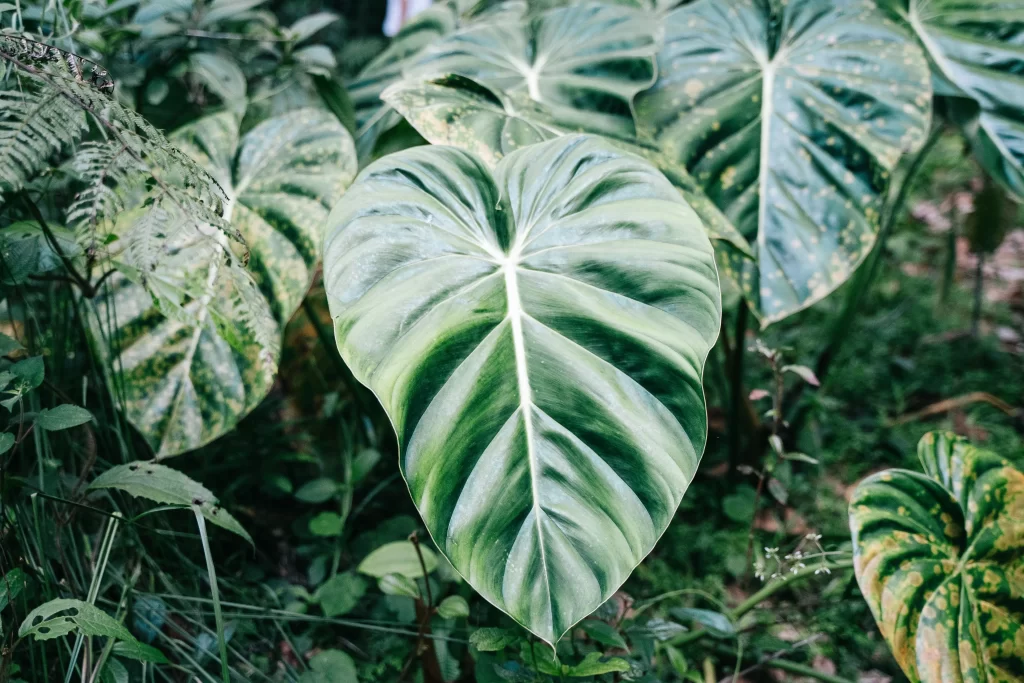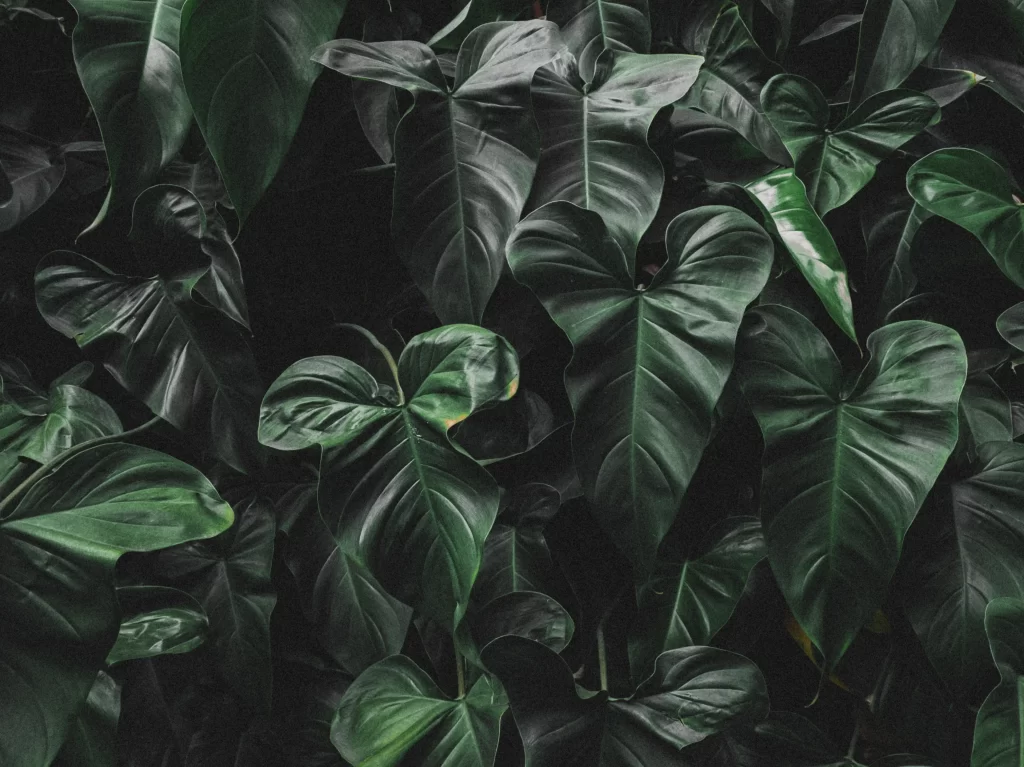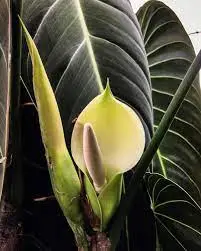The Philodendron melanochrysum, similar to Philodendron micans when young, develops distinctive dark leaves as it matures. This climbing houseplant thrives with support. P. melanochrysum, or P. andreanum, has long, dark, iridescent leaves known as the Black Gold Philodendron. It is sensitive to cold and prefers a humid environment.

Read: Types of Philodendron: Exploring Diverse Varieties
Philodendron Plant Overview
The melanochrysum, a Philodendron variation, hails from tropical regions in Central and South America. Initially lighter like Philodendron micans, its heart-shaped leaves darken and grow larger with age, showcasing yellow vein traces. It climbs on rocks and trees in its natural habitat in its natural habitat, reaching several meters in height[1]Botanical Information about Philodendron melanochrysum Plant. Read.
| Philodendron melanochrysum Identification | Description |
| Native to | South America |
| Height | 6 cm tall, Adult Height: >100 cm |
| Width | 10 cm broad, Adult Width: <10 cm |
| Flower Period | All year |
| Growth behavior | Climbing |
Leaf and inflorescence characterization of Philodendron melanochrysum
P. andreanum, a plant of taxonomic interest, exhibits distinctive anatomical characteristics. The petiole of this species measures between 3 and 11 millimeters in length, with a width and thickness of 2.2 and 1.2 millimeters, respectively. The cross-sectional outline of the petiole takes on a C-shaped form[2]COMPARATIVE LEAF MORPHOLOGY AND ANATOMY OF SOME NEOTROPICAL PHILODENDRON SCHOTT (ARACEAE) SPECIES, Steciana, 2014, Vol. 18(3): 159–17. Read.

Note: In P. melanochrysum, the outer periclinal walls exhibit a convex papillate morphology.
Philodendron melanochrysum has a unique inflorescence composed of a white spadix enveloped by a green spathe. Usually, the spathe is green or white. It is a perennial white shrub that blooms continuously from spring through fall.

Philodendron Plant Care Guide
The P. melanochrysum is an easy indoor plant that thrives in well-lit rooms but should avoid direct sunlight. Watering should be done when the top soil is dry, approximately once a week, or once every two weeks in colder months. It is possible to provide additional humidity by misting the leaves from time to time.
| P. melanochrysum Plant Care | Botanical Details |
| Light | No direct sun, semi-sun |
| Artificial Light Height | 20-40 cm |
| Air Humidity (on Day and at night) | On day 20-40% and at night 80-100% |
| Temperature | < 60 °F, Day: 50-85 °F, Night: 55-65 °F |
| Soil Type | Peat |
Conditions Require For Philodendron melanochrysum to Thrive Well
Temperature
P. melanochrysum thrives within a temperature range that is generally moderate and tropical. Temperatures between 10 to 30 °C are optimal, ensuring a warm and favorable environment for growth. To maintain the plant’s health, it is not advisable to temperatures below 15°C or over 35°C.
Humidity
This plant species, native to the tropical regions of South America, thrives in conditions with high humidity levels. During the day, a relative humidity ranging from 20% to 40% is suitable, while at night, a higher humidity range of 80% to 100% is recommended. Adequate moisture is essential for the Philodendron to replicate its natural habitat conditions and support healthy growth.
Read: Silver Sword Philodendron – Propagation, Care, and Benefits
Irrigation
P. melanochrysum requires a careful approach to watering. Every week or so, water the plant when the soil feels dry to the touch. However, the frequency can be reduced to once every two weeks in colder months.
This approach helps prevent overwatering, which can harm the plant’s health. Additionally, a periodic light mist of water on the leaves a few times a week can help maintain the desired humidity levels and support the plant’s well-being.
Toxicity in Philodendron melanochrysum
Philodendron is unsafe for small children as eating it can lead to stomach issues, vomiting, and mouth swelling due to calcium oxalate crystals in the leaves. It’s also not suitable for cats and dogs, causing mild problems like mouth irritation and vomiting if they ingest it.
Read: Philodendron erubescens – Characteristics, Toxicity, and Benefits
Propagation of Philodendron melanochrysum
Different methods can be used to grow Philodendron. Cuttings from stems can be used in this way. Cutting a branch about three inches long and with leaves from the main plant. After the piece has been cut, let it rest for a few days to allow it to heal. Make a small hole in the soil and insert the cutting into the pot. Place the pot in a warm, well-lit area with a moss pole to help it stand upright.
When To Divide and Transplant Philodendron melanochrysum
In early spring, water Philodendron a week before dividing. Plant in new soil-filled pots and water wells, and place in indirect bright light after gently removing it from the pot or ground. Divide roots and plant in new soil-filled pots. Fertilize after a month.
Conclusion
Philodendron melanochrysum, a tropical houseplant, prefers indirect light, warm temperatures, and high humidity. This blog has demonstrated all about the Philodendron melanochrysum plant, its care, toxicity, and a botanical overview.



